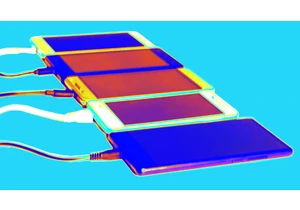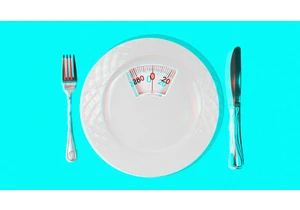If hybrid cars can cut CO2 emissions on the road, can hybrid-electric planes do the same in the air?
NASA is exploring that possibility, announcing this week two contracts to aviation startup Electra. The company claims it can meet NASA’s goal of reducing airliner fuel use by 60% to 80% by 2035 with a hybrid design that features generators powering motors to drive a large number of propellers. While this may sound like a convoluted way to power an airliner, the company claims it ultimately requires far less fuel than a traditional plane.
Electra is already flying a two-seat test plane with this kind of system and will debut a nine-seater with a 380-mile range this week. It’s now partnering with American Airlines, Honeywell, Lockheed Martin, MIT, and the University of Michigan to guide the design and scale up the tech to airliners.
Electra’s grants, totaling about $3.5 million, are part of the $11.5 million, to four companies and one university for the first phase of its Advanced Aircraft for Sustainable Aviation (AACES) 2050 program. First announced in August 2023, AACES challenges companies to propose aircraft concepts that could help bring passenger and cargo plane emissions to zero by 2050.
The aviation industry has long touted zero-emission fuels (for example, jet fuel made from biomass, or hydrogen produced with green electricity) as the ultimate climate solution. It’s easier to make enough of these fuels if new planes need a lot less of them—hence NASA’s challenge to Electra and the other winners to develop radically more-efficient designs.
The case for electric-powered planes
A number of companies are developing electric airplanes, but most are for short-range air taxi services. Toyota-backed Joby Aviation, for example, promises to put a four-passenger plane into service as soon as 2025. Powered 100% by heavy batteries, packing about 1/40th as much energy per pound as jet fuel, Joby’s plane can fly 100 miles per charge.
Electra stands out as one of the few companies, alongside Sweden’s Heart Aerospace and Ampaire and Whisper Aero out of the U.S., testing different hybrid concepts to dramatically extend range. (NASA has also been testing hybrid tech with other companies.) Electra and its allies’ initial concept for NASA is a 114-seat airliner that can fly nearly 3,300 miles, says Electra’s vice president and general manager, JP Stewart. But he says the tech can scale to NASA’s largest target: carrying about 300 people up to around 8,600 miles.
Electra’s take on hybrid technology is called a “series hybrid.” On a traditional plane, each propeller (or jet engine) requires a big, expensive turbine that burns jet fuel. By using turbines to power generators instead, Electra can run more props using lightweight electric motors. Electra’s initial sketch has five propellers across each wing (plus three in the tail), which the company says can improve airflow and boost the wing’s ability to lift the plane—tech that’s already working on its two-seat prototype. For its NASA proposal, Electra envisions an airliner that uses this hybrid tech and a new design of the fuselage (the tube carrying passengers) to take off with smaller wings, which will produce less drag and save fuel in flight.
Another benefit of hooking a turbine to a generator, says Stewart, is that the turbine can run at its most-efficient speed throughout the flight. Airplane engines have to be very flexible, gunning it on takeoff and landing and running less intensely when the plane is cruising in the air. Turbines that power the propellers directly don’t have the flexibility to do both tasks efficiently; electric motors do. Finally, by adding batteries to the mix, the plane can use a smaller turbine that needs to produce just enough power for cruising, says Electra. For takeoff and landing, battery packs join in to provide the extra oomph only when needed.
Electra’s concept is just one of several ideas NASA has given the green light to. Another contract winner, JetZero, has proposed a liquid hydrogen-powered, “blended wing body” concept for a jetliner or cargo plane that ditches the traditional design of a metal tube with wings and a tail. Instead, it has a tail-less, triangular shape that looks a bit like a B2 Stealth Bomber and promises major fuel savings.
Other winners include Georgia Institute of Technology, Pratt & Whitney (part of the RTX conglomerate), and Boeing-owned Aurora Flight Sciences, which are working on several engine and body technologies. (Aurora founder John Langford went on to found Electra in 2020.)
The task now for Electra, JetZero, and other winners is to produce a final airplane design in 18 months. Getting real planes in the air will take many more years.
Login to add comment
Other posts in this group


Welcome to the world of social media mind control. By amplifying free speech with fake speech, you can numb the brain into believing just about anything. Surrender your blissful ignorance and swall

Few periods in modern history have been as unsettled and uncertain as the one that we are living through now. The established geopolitical order is facing its greatest challenges in dec

Substack and Patreon are vying to become creators’ primary revenue stream.
For most influencers, payouts from platforms like Meta or Google aren’t enough to build a sustainable career. R

The European Commission is coming for “SkinnyTok.”
EU regulators are investigating a recent wave of social media videos that promote extreme thinness and “tough-love” weight loss advice,

The infamous “Am I The A**hole?” subreddit is making its way to the small screen.
Hosted by Jimmy Carr, the new game show for Comedy Central U.K. will feature members of the public appea

Former employees of OpenAI are asking the top law enforcement officers in California and Delaware to s
